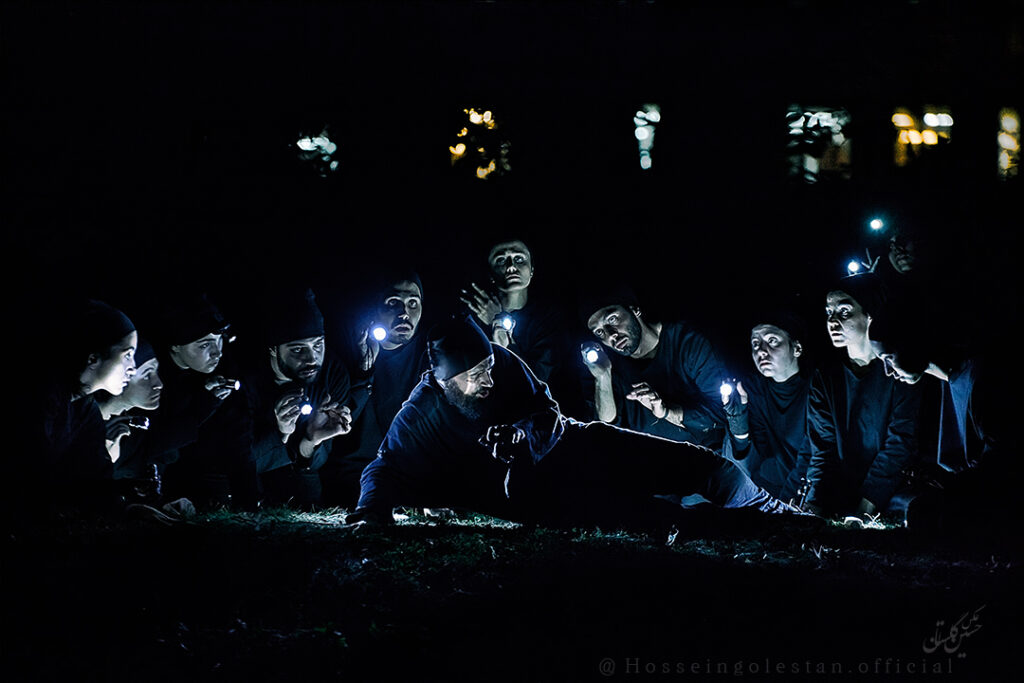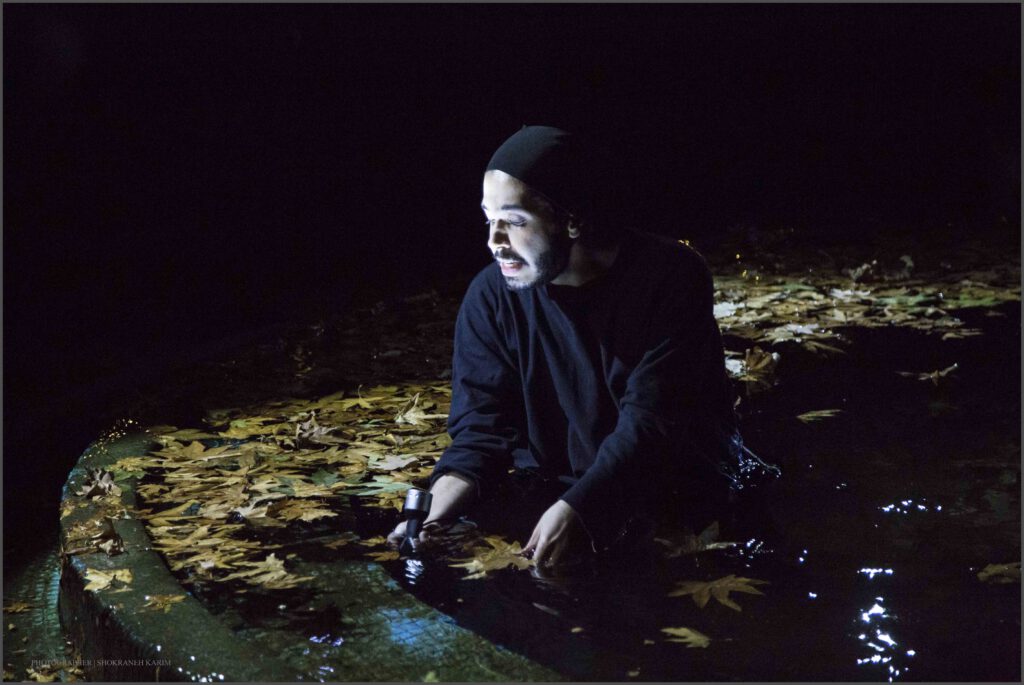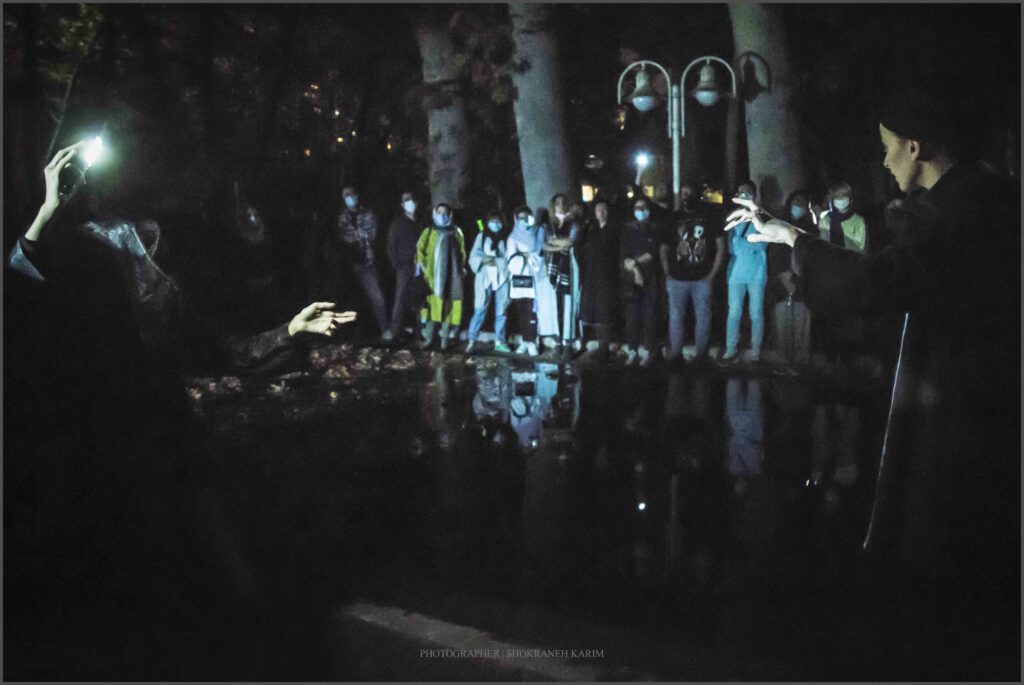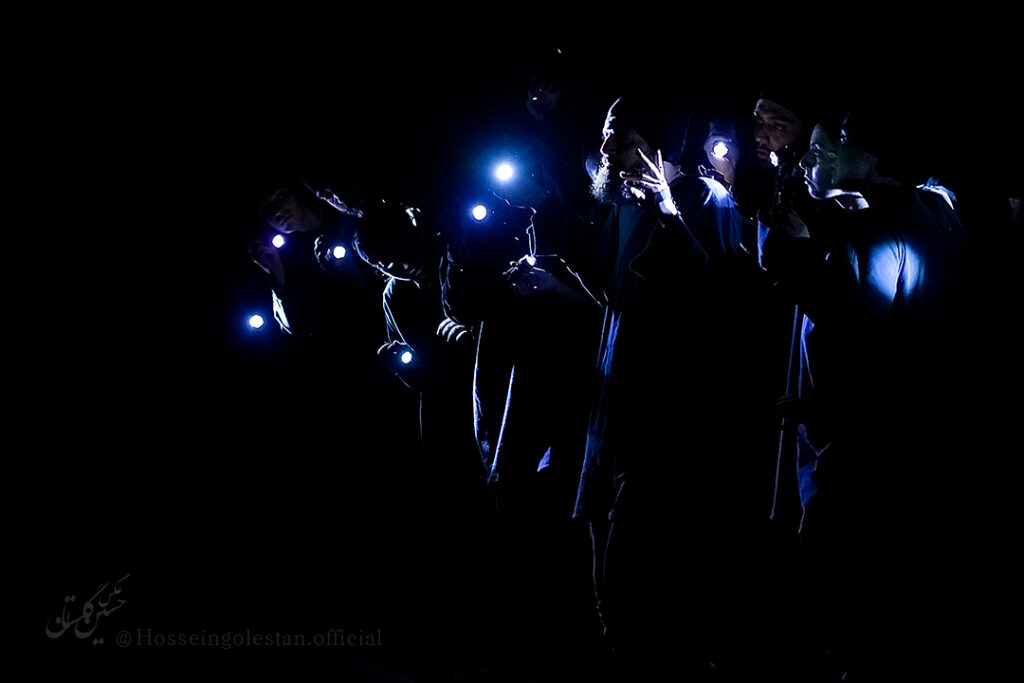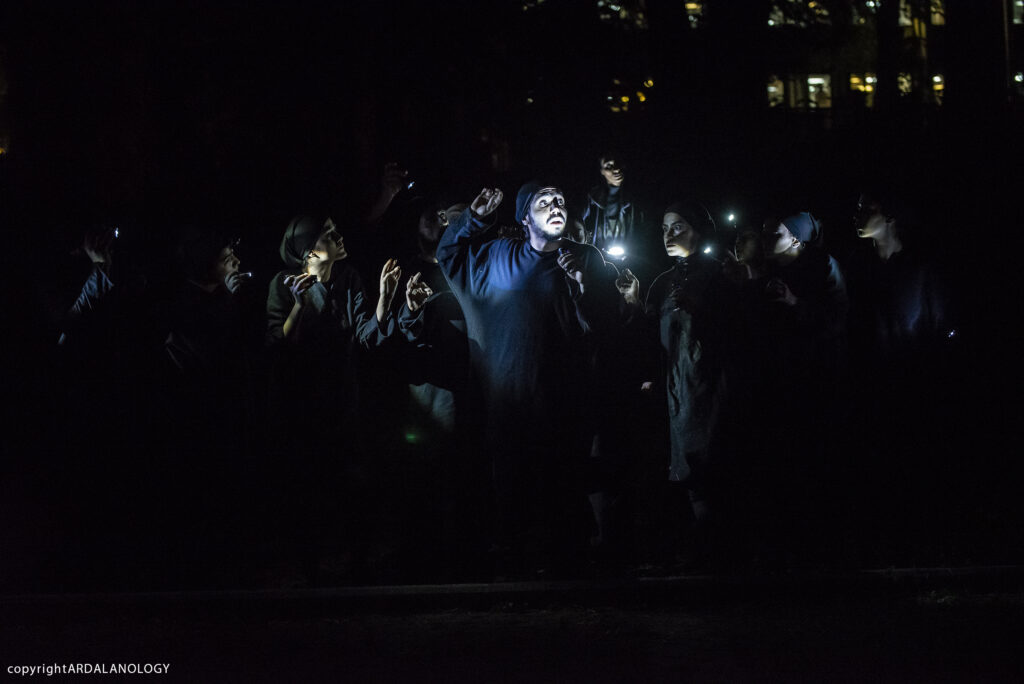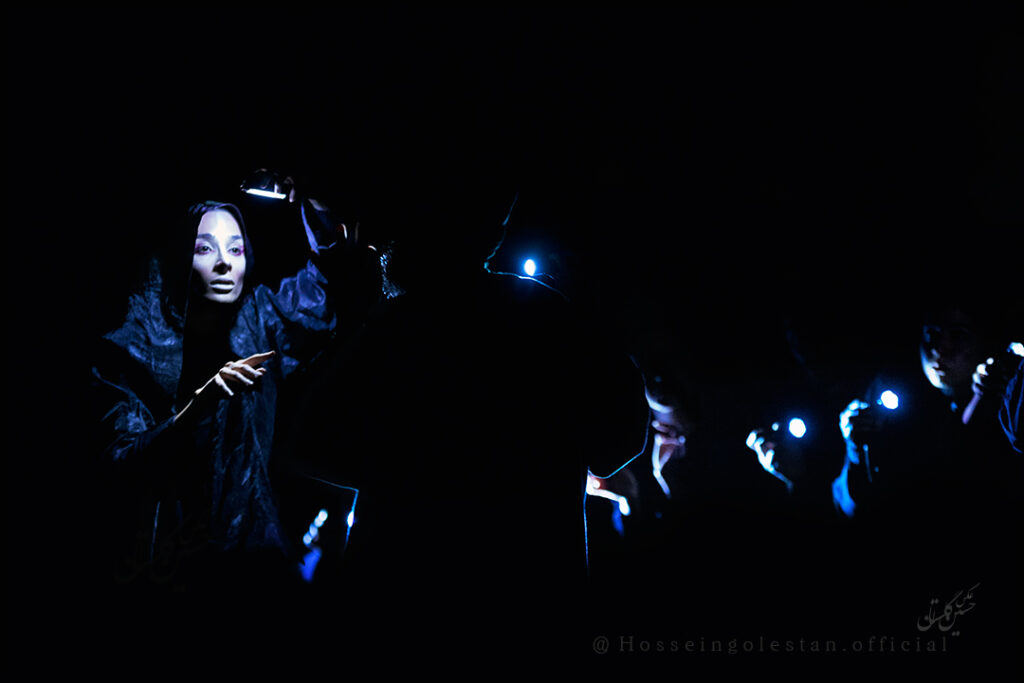“The 366th Night” project is the continuation of an almost long-term research project on the matter of “Dream”. Dream means the experience of night- mare and more specific the experience of Unpleasant dreams.
The Project started in 2015. At first it was a research on pre-existing written words, books and articles writ- ten on this subject. The main focus was only on the stories related to the matter of nightmare Mostly be- cause of the fact that the outcome of the research was not supposed to be an academic article, and so there is low written resources in this case. But there were some sporadic tales of the memories of night- mares on Persian, English and French weblogs and website, and this is where the project started.
The next phase was collecting the real experiences of people(who I had access to).
There was a public announcement on social medias by which, around eight hundred stories came in. significant parts of these stories were usable in this project. These stories got written and their repeating patterns got concluded. These were exactly twenty specific patterns which repeated in every dream. Liberation, getting lost, to be paralyzed, falling, encountering with a monster(Insect), war or the experience of apocalypse and similar examples.
The project concluded that these patterns are similar to the global examples (storied told by people all over the world) and these patterns are repeating every- where. At least to the point this research could reach. Among all, ten patterns were chosen and based on theme sixty monologues written. Meaning; six mono- log for each pattern. From the starting point of the project it was considered to benefit the facilities of random based performance.so, “Dice” enters to the performance. ‘The 366th night” is a theater-performance. It is designed so that a character named “THE HOST” entering the audience, with the steps of hypnotherapy, into the performance. The performance begins with the host counting from ten to on and imitating the steps of hypnotherapy. Then one audience is chosen randomly to roll the dice and then the audience enters the textual part of the play, which is the main part of the performance.
In each turn of “rolling a dice” there are six monologues. Six actor have had memorized and rehearsed these mono- logs and are ready to perform their own individual monologue which will be chosen by the accidental rolled number of the dice. When performing of the first monologue ends, THE HOST enters again and after the acts related to her happened, there will be another round of rolling the dice again, and again, and again. Therefore if the dice rolls to a same number in each turn there will be no problem because each round has its specific numbers and actors. In the first draft, there were supposed to be 10 rounds which would lead to a very long performance. If there were ten rounds of monologues and a two hour long play, this play could be performed in two hundred and forty million ways. Then it got reduced to four rounds of monologues and one thousand two hundred and ninety-six possible performances.
The stages of the play are designed based on sleep stages. Even if it is performed in a theater hall or in an out- door place.
In the outdoor performance of the play, the audience will experience the “napping” stage as they arrive. Which is the highest frequency before falling asleep and after that the brain frequency will start to get lower. This stage starts with 21 cycle per second frequency and will decrease to 14 cycle per second. This part, entering and waiting, is the beginning of the performance. The audience will pass the gate of the play and step into a place in which the performers as living sculptures are doing repetitive actions on grass and between the trees. At this part THE HOST reaches the stage and performs her hypnotherapy steps. The countdown begins and as it ends THE HOST will take the audience to the next stage. Each stage is separated by stairs and the audience will climb them by the guidance of THE HOST. As they reach the new stage of the play the first dice will be rolled. This scene is a symbol of going into the first stage (Alpha waves) of sleep.
The first story (monologue) will be performed here. The other performers will be moving in the garden or behind the audience. Symbolically playing the role of outsider motives which can drive us out of alpha waves not remembering we are asleep. as the story ends THE HOST will take the audience to the next new stage and the next dice will be rolled and chosen. This stage will go on until the turn of the third dice comes. The next stage is simultaneous with the third dice, symbolically takes the play in the REM stage. In the outdoor performance of “the 366th night” there is an iconic circular pond and a performer in it moving with his head above the water as the floating head is considered the moving pupil of the eye. Therefore the performer and the circular pond make a whole big eye. The last part of the play is like decreased brain frequency in order to forget REM experience.
At the end one audience will enters the stage and be attached to the performance and joins the play. He or She is immobile the whole time. Just like experiencing sleep paralysis, which can occur during REM. If somebody accidentally opens his/her eyes at this stage of sleep and wakes up, will experience the same thing.
In this way an attempt has been made to recreate the whole process of sleep with some nightmares.
It should be considered that the play takes place in an almost completely dark place and the light in the stage is from the flash lights carried by the performers. enlightening themselves, the stage and the place as designed. This performance is deformable and is site-specific.

